For those who can never get enough of tulips, daffodils, and spring bulbs, try potting them up to force them into cheerful bloom this winter in the house. See our tips on how to force bulbs and a timetable for when to pot up different types of bulbs.
It is easy enough to do, and you will be glad you did it when they start blossoming while there is still snow on the ground.
Temperature, moisture, sufficient cold period, and protection from rodents are the most important considerations. Some bulb varieties, like early single tulips, are easy to force. Many bulbs are now being marketed specifically for forcing and will say so on the label.
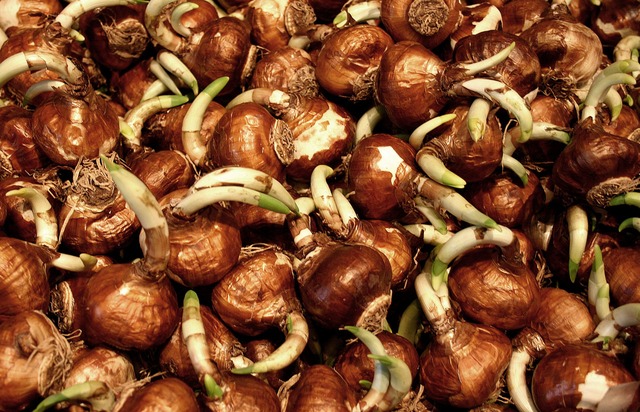
Buy the biggest, healthiest bulbs you can find and they will reward you with the best flowers.
What is “Forcing Bulbs”?
“Forcing” is speeding up the growth of a plant or bulb to make it bloom on your own schedule. Forced bulbs can add color and perfume to your home office from fall to spring. Since bulbs contain all of the nutrients they need to grow and bloom, it’s not hard to force them. It’s a matter of timing and temperature, mimicking winter’s dark and cold to encourage root growth and trigger the chemical reaction that leads to flowering, then moving the bulb into a strong light, as if spring has come.
Potting the Bulbs
Potting is the easiest part of this process and the messiest. I use shallow wide containers called bulb pans that are 5 inches deep and 8 inches across. Fill your pots half to three-quarters full of fast draining potting soil or a soilless mix. No fertilizer is necessary because your bulbs come packed with all the nutrition they need to produce this season’s flowers. Place them in the pot, pointy end up, as close together as you like. Don’t let them touch just in case one rots it won’t spoil the rest. A full pot gives a better display and you can mix varieties in the same container if you wish.
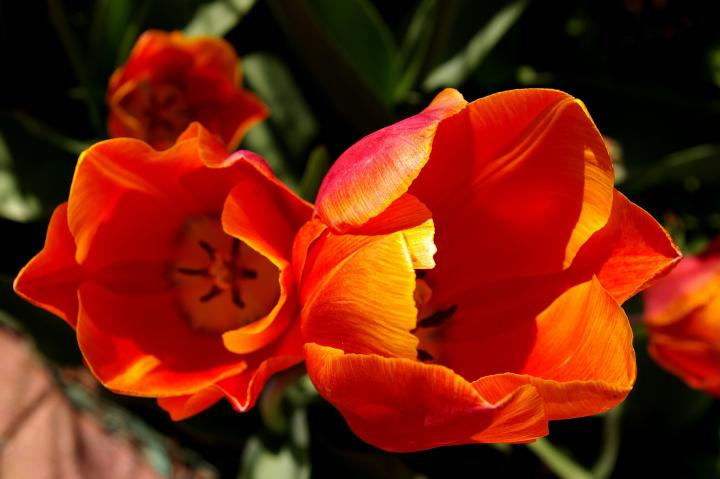
When planting tulips be sure the flat side of the bulb faces the pot rim because this is the side that will have the first leaf and it looks nicer draped over the edge of the pot instead of bunched up in the center. Cover the bulbs with soil to within an inch of the rim to allow room for watering. It is okay if large bulbs such as daffodils, tulips, and hyacinths have their noses sticking up out of the soil. Water the pots well and put them in a cold, dark, place to develop roots. Check the pots once a week and water when dry.
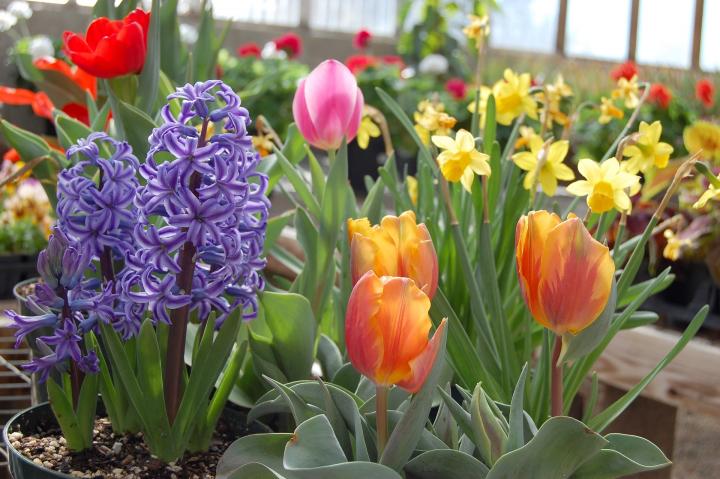
To get our flowering bulbs to bloom indoors we have to trick them into thinking winter has come and gone and it is safe to blossom.
Storing the Pots
The key to success is finding a place to store them that is accessible, cold enough, and protected from marauding rodents. Many books recommend digging a trench, putting the pots in there, and covering them with dirt or leaves. This will work in warmer climates. In the frozen north, however, you need to use a cold basement or unheated room that stays between 32 to 40 degrees. Most bulbs need 12 to 15 weeks of cold treatment before they are sufficiently rooted and ready to bloom. Check the bottom of the pots for roots. Even if they show some top growth but aren’t well-rooted, give them more time in storage.
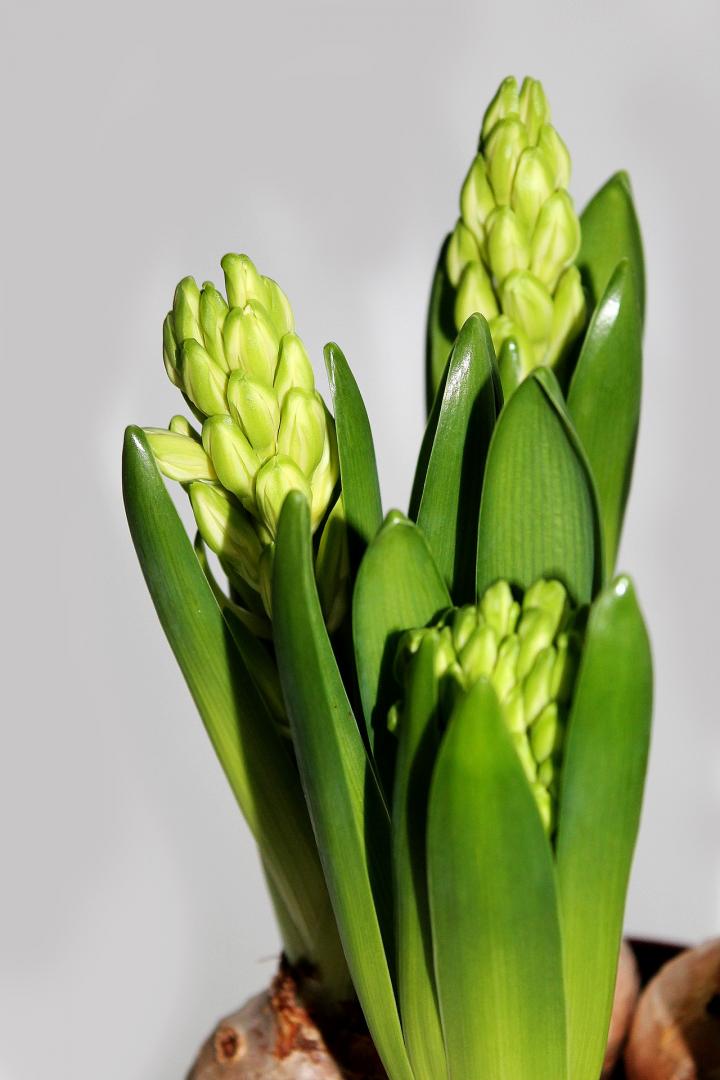
Forcing the Bulbs
When they have rooted and their time is up, you can start bringing pots out of cold storage. To prevent “blasting” or shriveling of the flower buds, introduce them to the warmth of the house gradually by placing them in a cool bright spot away from any heat source for 2-3 weeks. Most bulbs will begin to bloom in 2-5 weeks.
Timetable for Popular Forced Bulbs
Here’s a timetable for some popular forced bulbs:
- Crocus, iris reticulata, and snowdrops need 15 weeks of cold.
- Daffodils 15 to 17 weeks.
- Hyacinths, 11 to 14 weeks.
- Muscari 13 to 15 weeks.
- Scilla 12 to 15 weeks.
- Tulips 14 to 20 weeks.
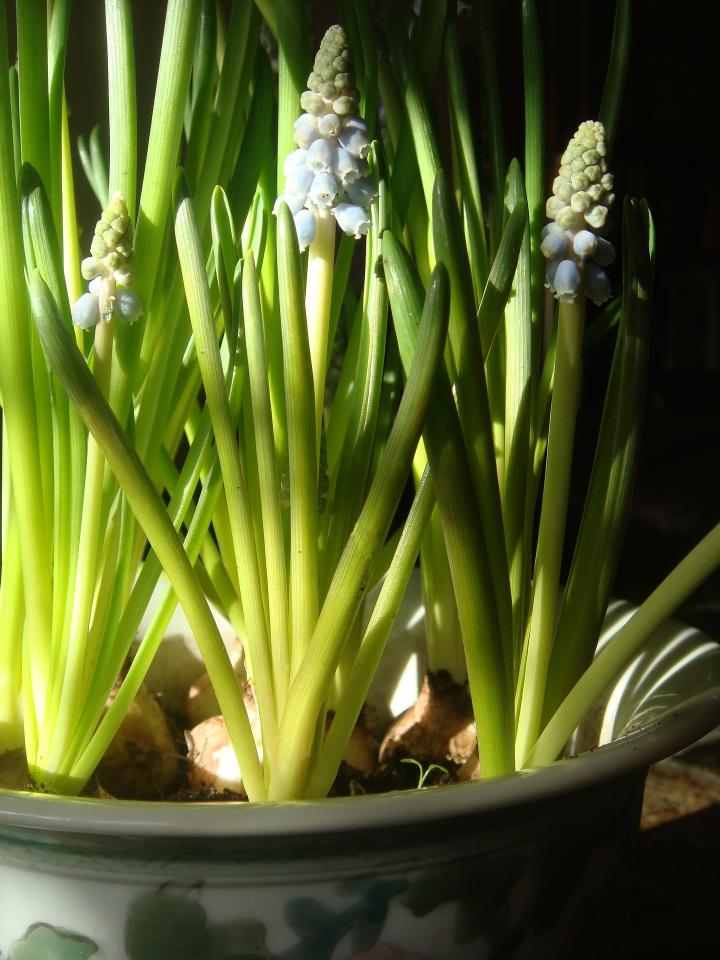
5 Tips for Forcing Bulbs
- To get the most impact from a pot of bulbs, plant daffodils or other bulbs in layers. Set the bottom layer snugly into compost or potting soil and cover it with soil so that their noses are still showing. Arrange the second layer of bulbs so that they sit between the tips of the lower bulbs. Then, add more soil to cover the bulbs completely and firm it with your fingers. Be sure to leave space at the top of the pot for watering and for a layer of coarse sand to help prevent the soil from drying out.
- For a weeks-long parade of beautiful bloom, start bulbs at 10-day intervals. Pot a few extra bulbs for holiday gifts.
- You can get potted bulbs to bloom again next spring if you keep them well-watered and fertilized after they bloom, giving them lots of light until their foliage yellows. Then, cut back on watering. When the foliage has withered completely, store the pots in a warm, dry place for the summer and plant the bulbs in the garden in the fall.
- If you chill your bulbs in a refrigerator or a root cellar, be sure to keep them away from apples and pears. Ripening fruit releases ethylene gas, which can stunt flowering and growth.
- The key to success in forcing bulbs is to keep them in a cool spot out of direct sun, even when they’re in bloom (they’ll last longer). Too much warmth, especially at first, will result in long, limp leaves and shriveled buds.
Did you know that you can also force branches of flowering trees and shrubs into bloom? See our article on forcing branches.
















